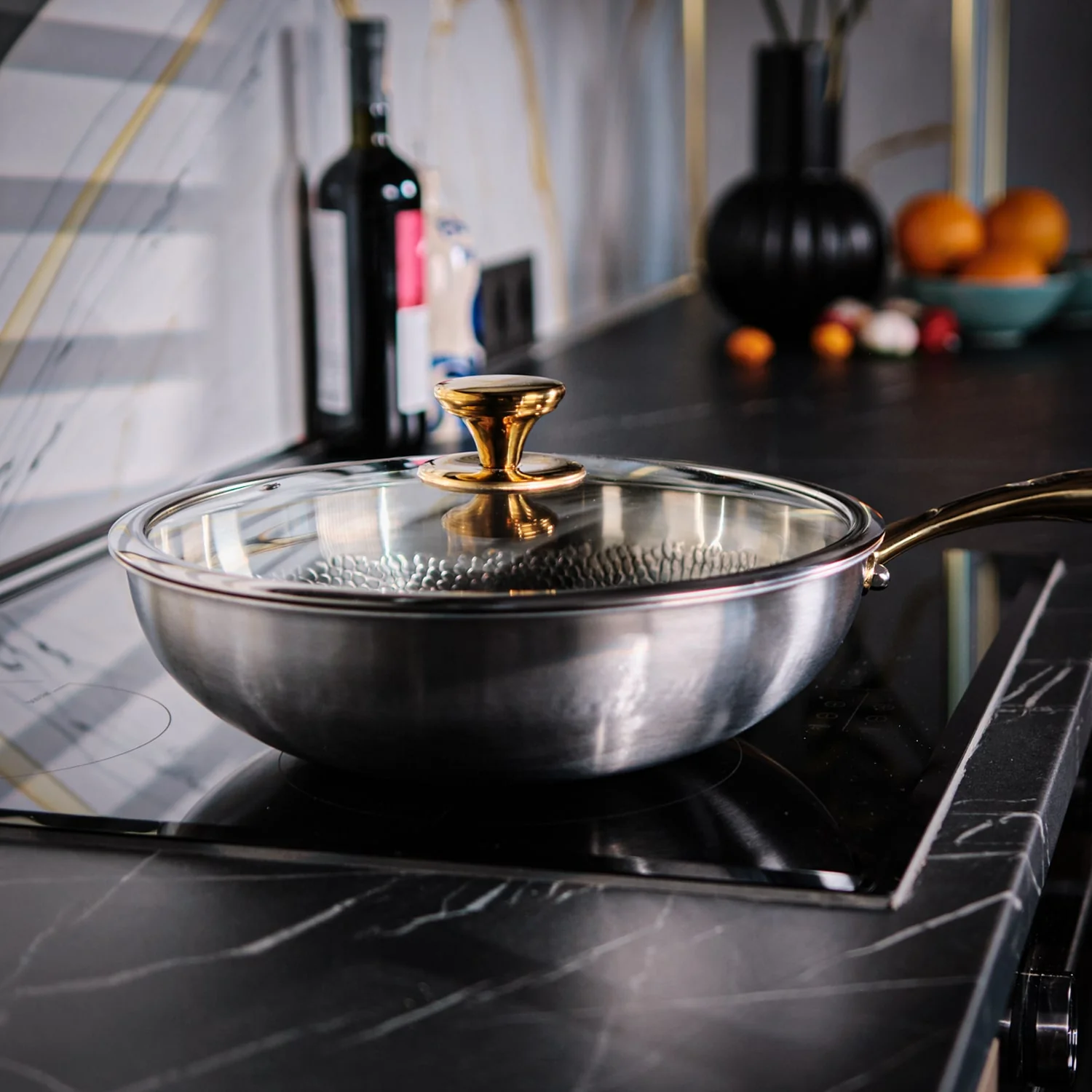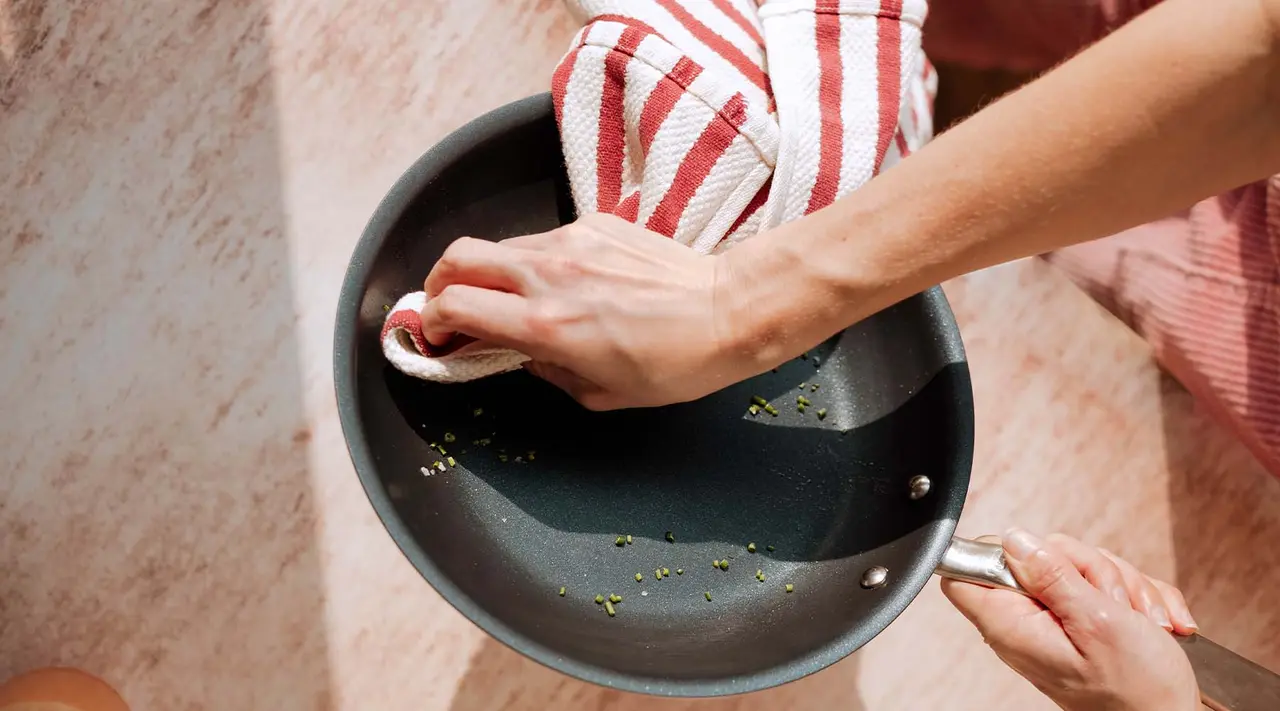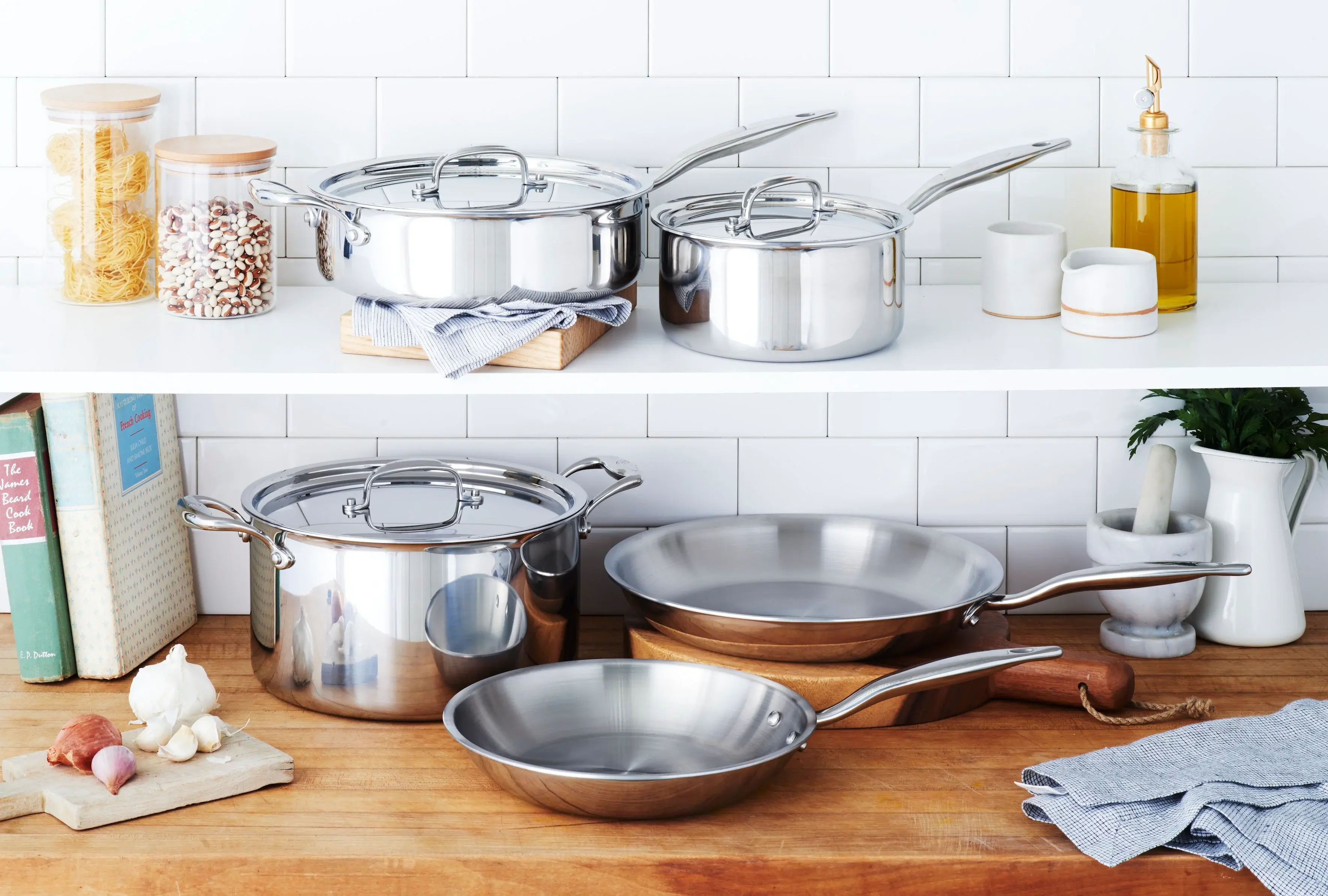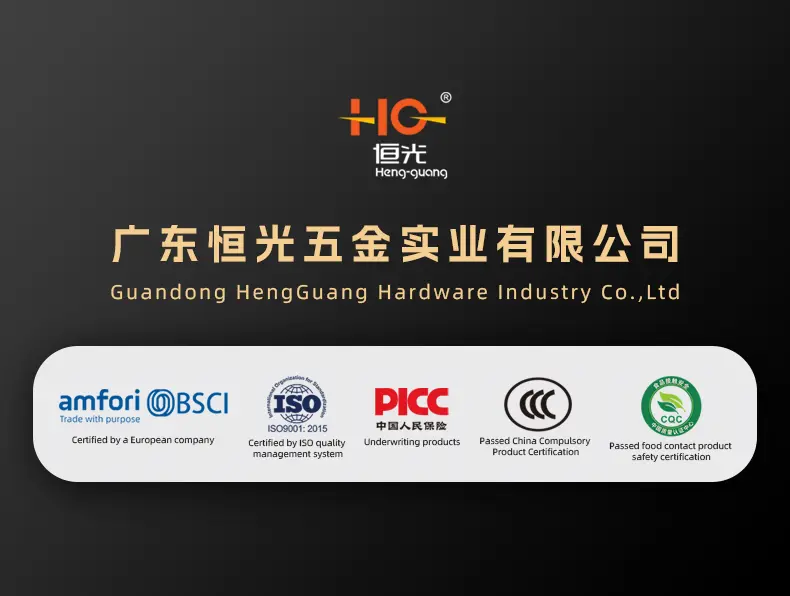
De nos jours, la fraîcheur des ingrédients et la propreté des ustensiles de cuisine sont les deux facteurs qui déterminent le plus directement la sécurité alimentaire et la santé en général. Le choix d'ustensiles de cuisine fabriqués à partir de matériaux dotés de propriétés antibactériennes inhérentes peut également constituer une protection supplémentaire pour votre santé.
Parmi les métaux et alliages courants, le titane (Ti) se distingue par ses propriétés qui lui permettent de protéger le nettoyage des cuisines et la santé humaine. C'est pourquoi Hengguang, un fabricant d'ustensiles de cuisine en titaneLe site Web de l'Union européenne, qui a été mis en place par la Commission européenne, montre que de nombreux chefs soucieux de leur santé se tournent vers lui pour faire des choix audacieux lorsqu'ils améliorent leurs outils de cuisine, comme les ustensiles de cuisine antibactériens en titane.
L'avantage antibactérien naturel du titane
Le titane est un métal de transition chimiquement inerte qui forme une couche dense de dioxyde de titane (TiO ₂) protectrice à sa surface lorsqu'il est exposé à l'air. Cette fine pellicule d'oxyde lui confère de nombreux avantages dans les applications de cuisine et constitue également un facteur clé de l'excellente performance hygiénique des ustensiles de cuisine antibactériens en titane :
Stabilité chimique et non-réactivité.
Le titane ne réagit pas avec les aliments ordinaires et n'introduit pas d'ions nocifs dans les aliments à des températures de cuisson normales. Les ustensiles de cuisine antibactériens en titane constituent donc un choix idéal pour les produits entrant en contact avec les aliments.
Faible adhérence entre les micro-organismes et les résidus.
La couche d'oxyde lisse et stable rend plus difficile l'adhésion des résidus alimentaires, des huiles et des micro-organismes à la surface. Moins il y a de résidus, moins il y a d'espace microscopique pour la croissance bactérienne - c'est aussi la principale raison pour laquelle les consommateurs choisissent des ustensiles de cuisine antibactériens en titane.
Potentiel photocatalytique (dans des conditions spécifiques).
Le dioxyde de titane est un photocatalyseur bien connu. Sous irradiation de lumière ultraviolette ou de lumière visible intense, le dioxyde de titane peut contribuer à la décomposition des composés organiques à la surface. Dans des applications bien conçues, cet effet peut réduire davantage la charge microbienne.

Même en cas d'exposition fréquente à la vapeur, à des températures élevées et à des environnements humides, cette stabilité et cette faible adhérence permettent à la surface de rester propre plus longtemps. Pour les cuisines qui souhaitent réduire les risques microbiens mais ne veulent pas procéder fréquemment à un nettoyage intensif, les ustensiles de cuisine antibactériens en titane constituent un bon choix.
Pourquoi les ustensiles de cuisine antibactériens en titane sont-ils importants dans la cuisine ?
Moins de risques de contamination croisée
La contamination croisée - le transfert de bactéries d'un aliment ou d'une surface à l'autre - est la principale source de maladies d'origine alimentaire dans les cuisines des ménages. La réduction du nombre de couteaux, de bols et d'ustensiles de cuisine résiduels permet de réduire le risque de transfert de bactéries provenant d'aliments crus (viande, fruits de mer, produits agricoles non lavés) vers des aliments prêts à être consommés. Le choix d'ustensiles de cuisine antibactériens en titane peut réduire ce risque à la source grâce aux caractéristiques mentionnées ci-dessus.
Réduction de la pression de nettoyage dans la pratique
Les ustensiles de cuisine en alliage de titane ne peuvent pas remplacer le nettoyage quotidien, mais les ustensiles de cuisine qui peuvent empêcher efficacement la croissance bactérienne peuvent réduire le risque de négligence occasionnelle, comme les petites marques laissées après un rinçage hâtif. Pour les familles très occupées, les ustensiles de cuisine antibactériens en alliage de titane peuvent devenir un complément pratique aux habitudes d'hygiène quotidiennes.
Protection supplémentaire pour les groupes sensibles
Les personnes âgées, les femmes enceintes, les nourrissons et les personnes dont le système immunitaire est affaibli sont plus sensibles à l'invasion de petites quantités de bactéries, qui peuvent entraîner des problèmes de santé. L'utilisation d'ustensiles de cuisine antibactériens en titane peut fournir des barrières passives supplémentaires, en complément des méthodes de manipulation des aliments.

Comparaison avec les matériaux des ustensiles de cuisine courants
| Matériau | Antibactérien | Résistance à la corrosion | Réactivité alimentaire | Conductivité thermique | Coût | Meilleure utilisation |
|---|---|---|---|---|---|---|
| Titane (pur) | Très élevé ; la couche de TiO₂ résiste aux bactéries | Excellent | Aucun | Faible ; souvent associé à des noyaux | Haut | Matériel de camping, ustensiles spécialisés |
| Alliage de titane | Les alliages de haute qualité alimentaire sont sûrs | Excellent | Aucun | Meilleur que le Ti pur | Haut-moyen | ustensiles de cuisine haut de gamme |
| Acier inoxydable (304/316) | Modéré | Très bon | Aucun | Modéré | Moyen | Ustensiles de cuisine de tous les jours, cuisines de pro |
| Aluminium (anodisé) | Modéré | Passable-bien | Réactif s'il n'est pas enrobé | Excellent | Faible-moyen | Cuisson rapide, batterie de cuisine économique |
Ustensiles de cuisine en titane - Le chef de file de la tendance saine dans la cuisine du futur
Avec l'essor d'un mode de vie sain, les ustensiles de cuisine en titane deviennent le choix préféré des familles et des restaurants. Le titane est connu pour sa légèreté, sa solidité, sa durabilité et sa résistance à la corrosion. Sa couche d'oxyde stable possède également des propriétés antibactériennes naturelles, ce qui contribue à la propreté et à la sécurité des cuisines. Les outils de coupe, les bols, les baguettes et les poêles à frire en titane sont des produits qui allient performance et hygiène et sont très appréciés des familles et des professionnels. Les ustensiles de cuisine en titane ne réagissent pas avec les aliments et sont entièrement recyclables, conformément aux objectifs modernes de développement durable. Son équilibre entre sécurité, durabilité et respect de l'environnement en fait le matériau de prédilection de la prochaine génération de cuisines saines et de qualité.

Conclusion
Le titane n'est pas une solution universelle ; une manipulation soigneuse des aliments et un nettoyage adéquat sont toujours essentiels. Cependant, comme les consommateurs exigent des solutions de cuisine plus saines et plus pratiques, l'inertie du titane, sa résistance à la corrosion et sa faible adhésion microbienne en font un matériau populaire pour la prochaine génération d'ustensiles de cuisine.
Actions de Hengguang

En tant qu'entreprise spécialisée dans la recherche et le développement d'ustensiles de cuisine de haute qualité, Hengguang accorde toujours une attention particulière à la combinaison de la santé de la cuisine et de la technologie des matériaux. Afin de permettre à un plus grand nombre de familles de profiter de la santé et de la commodité des matériaux en titane, Hengguang investira bientôt dans la recherche et la production d'ustensiles de cuisine en titane, s'engageant à introduire des produits en titane antibactériens naturels, sûrs et durables, respectueux de l'environnement et sains dans des milliers de foyers, en commençant par la cuisine pour la santé.
Si vous avez besoin d'un ustensile de cuisine en titane spécial pour votre marque, en tant que fabricant professionnel d'ustensiles de cuisine en titaneNous proposons également solutions personnalisées en matière d'ustensiles de cuisine en titane pour aider votre entreprise à créer des produits adaptés au marché.